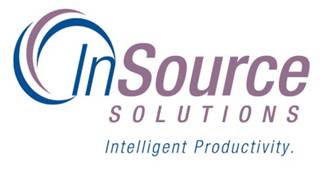InTouch on Terminal Services with ACP
 | |
| ARCHITECTURE GUIDE |
Description
Intouch with Terminal Server and ACP ThinManager Server Failover
.
| Author | Mike Viteri |
| Publish Date | 1/6/2014 |
| Applies to Software | Intouch |
| Applies to Version | |
| Applies to System/Module | |
| Article Version | 00.00.01 |
************************************************************************************************************************************************************
Concepts and Terms
To get started with Intouch for TSE please refer to this document.
ThinManager is a server-side configuration, management, and hardware enabling software for Terminal
Services based thin client systems.
ThinManager is a software program that allows thin clients to boot, receive a configuration, and connect
to a terminal server. ThinManager provides terminal configuration, session management, and session
status monitoring. ACP ThinManager provides quick replacement of terminals and an almost seamless
switch from terminal server to terminal server in case of terminal server failure.
A thin client is a device that connects to a server, logs onto a separate independent session, and runs its
applications on the server and not locally on the thin client. Thin Clients first connect to a ThinManager
Server where it receives its configuration. This configuration sends the terminal to a terminal server where
it logs in.
The keystrokes and mouse movements from the thin client are sent to the terminal server. The terminal
server session determines the response and sends the screen display back to the terminal. This
simplifies maintenance and management by eliminating the need to install and configure operating
systems and applications on the thin client. All configuration, management, installation and applications
are on the server, not the thin client.
How Thinmanager Works
Glossary of Terms
Automation Control Products
A ThinManager server, a terminal server, and ACP
enabled thin clients connected and configured on
the same network.
Diagrams and Layouts
ACP ThinManager offers a centralized management solution for the modern
Notes and Warnings
Planning Consideration for Terminal Server Applications with Intouch and ACP
The following system specifications are supported. The following information was derived from the specific test plan and is not intended as a limitation.
TSE Platforms
- Hardware: 2.8 GHz with 2 GB RAM, 1 GB network switch
- Windows Server 2003 SP2 (32 and 64-bit version)
- Windows 7 and SP1
- Windows Server 2008 R2 and SP1
In Wonderware tests, the TSE Platforms were used for client connection only. The Platforms did not have App Engines. Each Platform was configured to be an alarm provider and was filtered to subscribe to eleven Areas. Each Platform was deployed to a Terminal Services machine.
Client Nodes
- Hardware: 2.8 GHz CPU with 1 GB RAM, 1 GB network switch
- Windows XP SP3 (32-bit only)
- Windows Vista SP2 (32/64-bit)
- Windows Server 2003 SP2 Standard and Enterprise (32-bit version)
- Windows 7 and SP1
- Windows Server 2008 R2 and SP1

